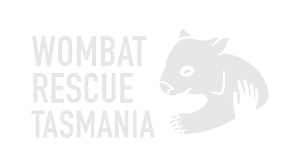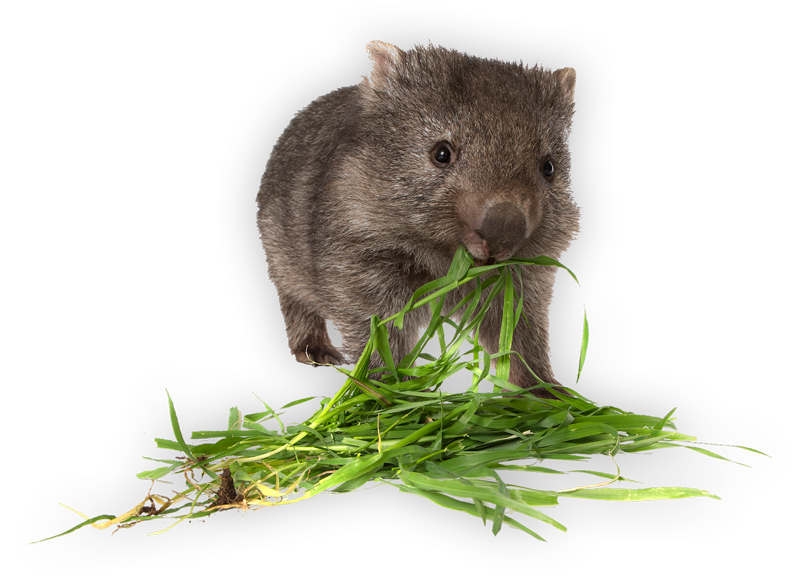What does WRT do?
WRT delivers extensive treatment programs
(completed and current)
These programs are in addition to the hundreds of kits sent to all parts of Tasmania and the training provided to new volunteers.
Kelso in the West Tamar Region
Over 80 burrow flaps have been installed over the course of 2018 to intensively treat the population of wombats on a rotational basis at Kelso. 46 burrows are under treatment now and wombats are being currently monitored through daily observations and the use of cameras on the burrows to identify mange and to assess treatment.
Evandale and Longford Areas
Private farm land.
Southern Tasmania
Reports of mange have come from places such as Nugent, Orford, Elderslie, Dunalley, , southern Midlands, Central Highlands and the Tasman Peninsula. Volunteer training sessions for the community around the Triabunna area and other mange hotspots have been implemented in response.
Musselroe Windfarm (MRWF) at Cape Portland
An intensive burrow-flapping program on the Musselroe Windfarm in the north-east was completed at the end of 2017 after 6 months of treatment. This involved online and onsite inductions for volunteers and five zones were identified on the vast property, with a total of 150 burrow flaps. A donation of a tablet with Avenza maps supported the place marking of burrows for easier identification. Recent spotlighting trips indicated only five cases out of almost 200 wombats. However, constant monitoring through regular daytime and night time surveys and ongoing treatment for individual cases to try to control any further outbreaks.
Lost Farm and Barnbougle in the northeast
Approximately 25 burrow flaps were placed in surrounding areas of the golf course to treat the mange cases reported by the club.
It is clear that mange, unfortunately, is not confined to Narawntapu or the northern West Tamar region as the Government has tried to convince the public.
WRT advocates for wombats on other issues
In addition to the scourge of mange, permits to cull wombats, clearing of wombat habitat and road accidents are serious threats to our wombats.
Culling
Shooting healthy wombats instead of implementing non-lethal land management practices, such as wombat gates, cannot be condoned. WRT worked in conjunction with Wombat Warriors to put pressure on the Tasmanian Government to stop issuing farmers and landowners with cull permits. Every cull permit was a licence to shoot 50 wombats. Wombat Warriors released a change.org petition on Facebook on Sunday, 11th June 2017, targeting the then minister, Jeremy Rockliff to ‘STOP Government sanctioned wombat culling’. See the short video with a link to the petition.
WRT create public campaign to reduce roadkill
Slow down between dusk and dawn. It is heartbreaking to see healthy wombats being killed on our roads. It is also very distressing to see mange victims that are showing signs of recovery, after being treated by volunteers, then be run over by a car. Your actions can save wombat lives! If it is safe to do so, pull over to check to see if the wombat is deceased and whether has a joey in the pouch. It is best practice to remove road kill off the road to avoid other animals being hit.
Pull the deceased wombat off the road by the front legs and roll it over on its back to check whether it is male or female. It is a good idea to keep gloves in the car for handling the wombat, and a pillow case or warm soft beanie in case of an orphan.
WRT provides education in the community
WRT provides presentations on how mange impacts our wombats at schools, board rooms, and community groups.
Habitat destruction and developments
In Kelso late last year, a land owner bulldozed and burnt approximately 30 acres of gorse, despite being informed by local residents that it was habitat for up to 15 wombats, who we believed died in their burrows as a result. These wombats were well-known to the team who had been treating them on site prior to the land being sold and cleared. The land owner did not seek to take any mitigating measures, nor did he seek advice from DPIPWE or other land care groups before commencing removal of the gorse (a zone B weed in the West Tamar).
DPIPWE’s guidelines for gorse removal are very broad and do not mention the need to consider habitat for native species.
WRT consulted with lawyers at the Environmental Defender’s Office about this tragedy.
The EDO’s key recommendations include:
- Listing sarcoptic mange in wombats as a notifiable disease.
- Changing status of wombat species from common to vulnerable.
- Implementing Key Threatening Process – where sarcoptic mange threatens the survival of the wombat species, it would be under the Environmental Protection and Biodiversity Conservation Act 1999 (EPBC Act).
- Implementing a Threat Abatement Plan to manage all threats to the wombat species.
- Amend gorse removal advice provided by DPIPWE so that habitat has to be taken into consideration by land owners.
Current research into mange
Research into the efficacy of other treatments for sarcoptic mange needs to be advanced rapidly to help our suffering wombats and halt the spread of mange.
There are hopes for a faster acting drug that can cut down the lengthy time it currently takes to treat wombats. Scott Carver, a University of Tasmania researcher, has been trialing a new chemical treatment to test its safety and efficacy before release.
Source
https://www.abc.net.au/news/2018-07-15/wombat-mange-drug-trialled/9994296
Links to other mange treatment groups
rocklilywombats.com
wombatprotection.org.au
mangemanagement.org.au
cedarcreekwombatrescue.com
sleepyburrows.com.au



Keep In Touch